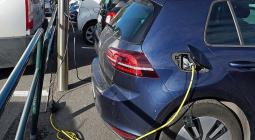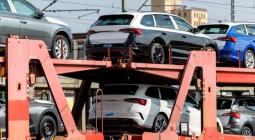Norwegian Cities Favour Transit, Walking Despite Generous National EV Subsidies

Even as other countries look to Norway for inspiration on boosting electric vehicle adoption, its cities are looking to mass transit and walkable communities—not cars—for the stable climate and greater equity that the energy transition promises.
The past 10 years have made Norway the “poster child for electric cars,” but that success has also generated some cautionary lessons for Norwegians and the rest of us, writes transport policy expert David Zipper in a guest post for Vox.
“Eye-popping EV subsidies” in place since the 1990s have led to 87% of the country’s new car sales being fully electric, a share that towers over the European Union’s current 13% and the United States’ 7%. EVs in Canada hit 8.4% for battery-electric models and 1.8% for hybrids in the last quarter of 2022, Electric Autonomy Canada reports, for a total of 10.2% of new car sales.
Once excited at the prospect of growing an electric vehicle manufacturing hub, the Norwegian government threw its support behind two early EV start-ups, “Buddy” and “Think.” It exempted EVs from high sales taxes that would average US$27,000 per car today, and from all roadway tolls anywhere in the country.
Its ambitions to become an EV giant did not survive the rise of Tesla, but Norway’s EV supports did, reframed as essential in the fight against climate change. In 2019, then-prime minister Erna Solberg described an EV purchase as “the most important thing you can do personally and privately to help reduce climate emissions.”
Already passionate about all things automobile, Norwegians responded to this plea in the hundreds of thousands. With discounts and toll exemptions already in place, Oslo further sweetened the pot by inviting EV owners to drive in bus-only lanes.
It paid off: EVs’ share of new vehicle sales surged from 1% in 2014 to more than 80% today, and Norway’s surface transportation emissions fell 8.3% between 2014 and 2023.
But the eager EV embrace has come at a cost, notes Zipper. Many low-income Norwegians still cannot afford to own a car, despite the lavish EV subsidies.
“The likelihood that a Norwegian household would purchase an EV rose 26% with each 100,000 Norwegian Kroner (around $11,000) in annual income, suggesting that electrification subsidies—which ballooned to $4 billion in 2022, equivalent to 2% of the national budget—have redistributed resources toward the rich,” Zipper writes, citing a study published in the Journal of Transport Geography in January.
The push to adopt EVs has also undermined efforts to provide and promote more sustainable modes of transport, especially in urban areas. “The effect of EV adoption on public transportation has been a particular concern for Norway’s cities because boosting transit ridership has been a linchpin of local mobility strategies,” Zipper says.
Generous EV subsidies mean that Bergen’s light rail and Trondheim’s recently overhauled bus fleet continue to struggle to attract riders, he writes, while EV toll exemptions have steadily eaten away at a critical funding stream for transit improvements, like a new metro line for Oslo.
“Everyone agrees that 100% of cars should be electric—that’s not the question,” said Tiina Ruohonen, a climate advisor to the mayor of Oslo. “The real question is whether you really need to own a car in Oslo.”
Norway’s capital does seem to have answered that question, joining its sister big cities Bergen, Trondheim, and Stavanger in committing to meet all future trip growth through transit, biking, and walking, rather than cars.
Furthering its commitment to building more equitable and livable communities, Oslo has also removed more than 4,000 parking spots since 2016, added bike lanes, widened sidewalks, and adjusted traffic patterns to reduce through traffic.
Those efforts are paying off, Zipper writes. In all of 2019, “not a single pedestrian or cyclist was killed in a crash.”
But there’s still a powerful disconnect between municipal efforts and the national agenda. “The country’s current 12-year National Transport Plan includes initiatives to catalyze the adoption of zero-emissions vehicles, but none to reduce car trips,”
It is simply politics that leads the Norwegian government to downplay reducing emissions through transit, biking, and walking, said Oslo city councillor Eivind Træda. “Nobody’s mad about getting a cheaper new car, right?”
“It’s politically easier to just give them car subsidies.”
Vox has the full story here.





